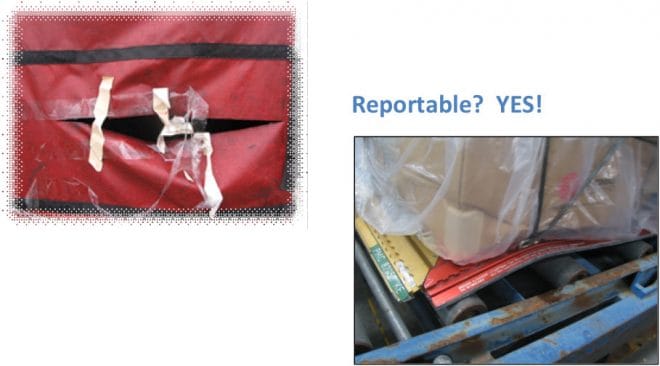CARE, Ground Handlers, Regulators, Safety
Guide to Ground Safety Reporting
ULD CARE wishes to alert you to a highly relevant publication from the UK Civil Aviation Authority entitled
ULD CARE wishes to alert you to a highly relevant publication from the UK Civil Aviation Authority entitled “Guide to Ground Safety Reporting”.
This document was published in September 2013 and is downloadable at http://www.caa.co.uk/application.aspx?catid=33&pagetype=65&appid=11&mode=detail&id=5806. It provides an easy to understand guide to the requirements of the UK CAA’s CAP 382 “The Mandatory Occurrence Reporting System” which has been in force since March 2011 in its current format.
In case you are wondering why this matters to you, as a facilitator, we aim to provide some guidance and we highly recommend that you take steps to familiarize yourselves with the implications of this document.
The guide lays out, very clearly, the responsibilities of all staff involved in the aircraft turnaround phases to report all events that affect the safety of the aircraft. This is done through an established process, within a defined time frame, using the employer’s safety reporting system. The information is sent to the relevant section of the UK CAA.
The publication includes the following examples :
“Defective restraint equipment should also be reported such as nets, straps, locks and ULD’s which are used to carry traffic loads” (see page 8 of the above mentioned document)
“Sometimes it can be easy to overlook an error. For example, if you were to discover unrestrained load during the offload of an inbound flight, ensure you report it” (See page 5, Did you Know ?)
“A ground handling safety event in the UK should be reported to the CAA (MOR Scheme) regardless of whether the aircraft involved is UK or foreign.” (see page 4)
How does this impact ULD owners and operators ? There are probably two major impacts here :
Firstly, ground handling companies, who have traditionally not fallen under any civil aviation regulations, are now being required under UK law to play an active role in reporting any and all safety violations they see. To our knowledge, this is a first.
Secondly, this applies to all aircraft on UK soil, not just those belonging to UK airlines. Since a very large percentage of the world’s airlines fly to the UK this can be said to have a very broad impact.
It is important to note that ULD’s and ULD accessories, including restraints, are specifically mentioned in this document. This leaves no doubt as to whether a ground handler is responsible for reporting the presence of unsafe (read damaged) ULD’s on all flights they handle, either inbound or outbound.

ULD CARE believes that this is a development that is of importance to both airlines and their ground handlers. While we cannot foretell the future, it would not surprise us to see this sort of approach being applied on a much wider scale by other authorities. This will make it all the more essential that ULD’s are only ever operated when in fully airworthy condition.


